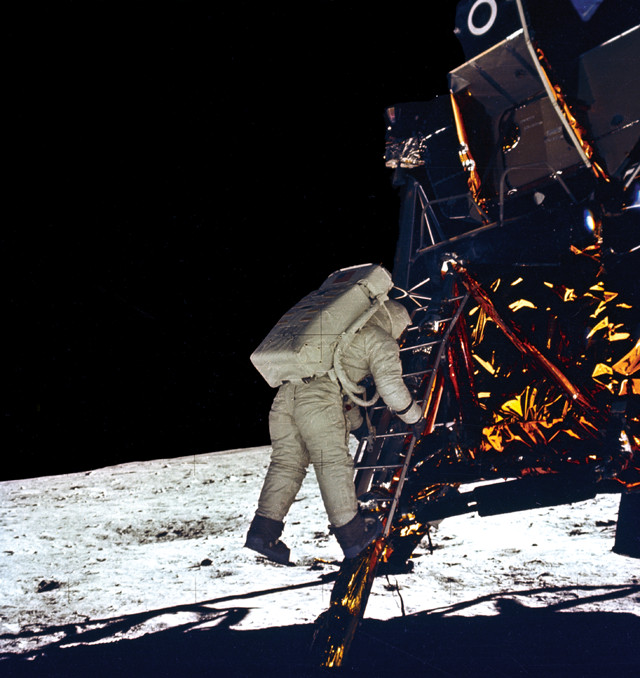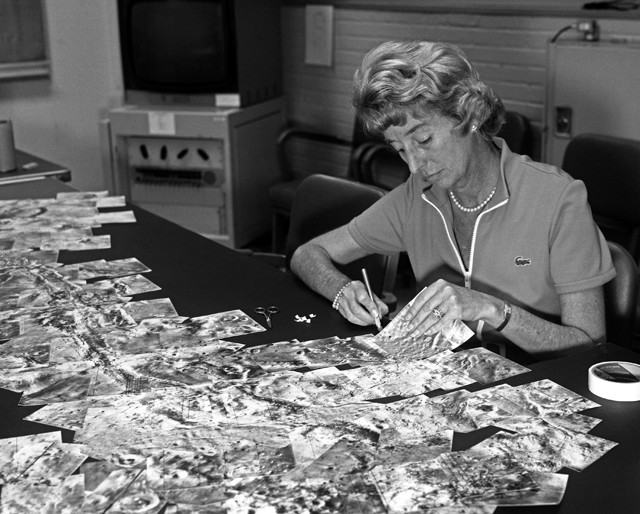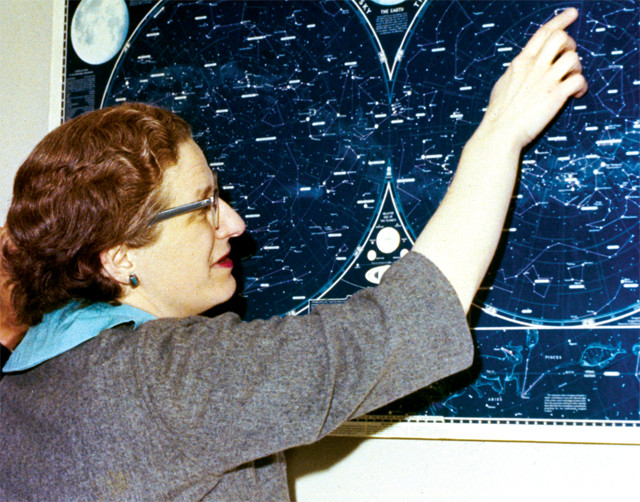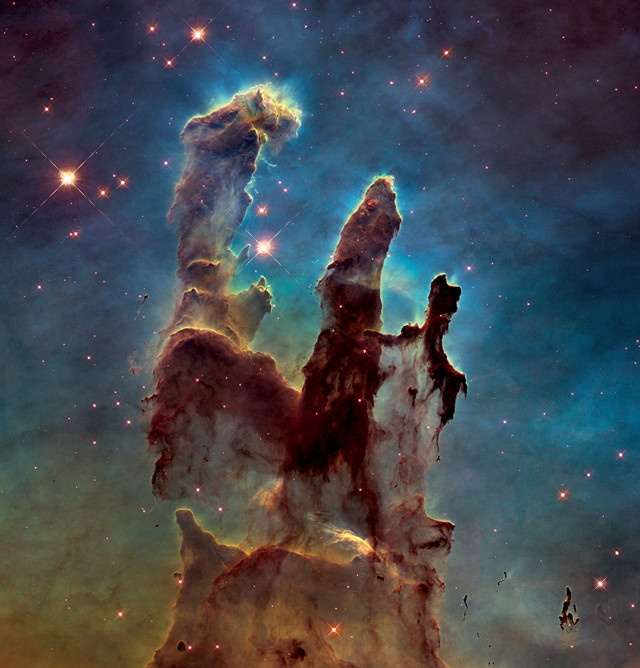
by Bethany Augliere Tuesday, June 5, 2018

U.S. astronaut Edwin "Buzz" Aldrin climbs down the ladder of the lunar lander during the July 1969 Apollo 11 moon landing, which effectively ended the space race. Credit: NASA.
Growing up in the suburbs of Washington, D.C., meant that my house was often frequented by guests who wanted to visit our nation’s capital. Without fail, this meant my family and I would be taking a trip to one of the Smithsonian’s most popular attractions, the National Air and Space Museum. I can’t count the number of times I visited the museum before I left for college, but it was a lot. Although glimpsing the museum’s collection of aircraft and spacecraft was cool at first, I would much rather have spent those afternoons wandering the halls of the National Museum of Natural History.
But my journey through space history didn’t stop in my own backyard. In middle school I took a private tour at the John F. Kennedy Space Center in Florida because my cousin worked there as an aerospace engineer. Although this behind-the-scenes tour would be riveting for some, the truth is, the giant alligators soaking up the sun on the grassy banks nearby stole my attention.
It wasn’t until I was a young adult that I developed an interest in stars and space. My grandfather, with whom I first began stargazing, shared his awe of space with me. Until his death in 2016, he would always call to tell me if there was a conjunction in the sky. As I learned to recognize the night sky, my curiosity for the entire field grew. Eventually, I peered through telescopes to learn the features of the moon or glimpse Jupiter’s moons, and researched the things I was seeing, like red giants and nebulae. Now, as a science writer, I regularly explore space, covering topics such as the 20-year-long Cassini Mission.
Sixty years ago this month, on July 29, 1958, President Dwight D. Eisenhower signed the National Aeronautics and Space Act, officially establishing NASA. In the ensuing years, NASA has regularly pushed the boundaries of scientific and technological achievements in air and space, as with the moon landings of the Apollo Program, the deployment of the Hubble Space Telescope, and exploration of Mars with increasingly intelligent spacecraft. The agency has also made countless discoveries about the cosmos, and continues to do so — the recent launch of TESS (Transiting Exoplanet Survey Satellite) to survey our space neighborhood, likely discovering thousands of new planets outside our solar system.
For the American public — and perhaps worldwide — the mention of NASA likely brings to mind popular figures like astronauts Alan B. Shepard, Buzz Aldrin and Neil Armstrong. Yet, if the 2016 biographical drama “Hidden Figures” taught us anything, it’s that there are many important figures who worked behind the scenes throughout the agency’s history.
In the late 1940s, the United States worked to establish itself as a world leader in technological development. Coming out of World War II, the Department of Defense pursued research and rocketry. Other nations followed suit, and in 1952, the International Council of Scientific Unions designated the International Geophysical Year (IGY) from July 1, 1957, to Dec. 31, 1958. The IGY was part of a collaborative effort among 69 countries, including the U.S., to further understanding of Earth’s gravity, aurorae, ionosphere and geomagnetism, among other characteristics.
In July 1955, President Eisenhower announced a plan to launch a scientific satellite into orbit as part of the IGY. The president put out a call for proposals, and ultimately chose the Naval Research Laboratory’s Project Vanguard on Sept. 9, 1955. In response, the Soviet Union also announced plans to put its own satellite into orbit, sparking the space race. On Oct. 4, 1957, the Soviets launched Sputnik I.
Sputnik I was the world’s first artificial satellite. About the size of a beach ball and weighing a mere 83.6 kilograms, it spent a total of 98 minutes orbiting Earth. Then, just one month later, the Soviets launched Sputnik II, carrying a stray dog from Moscow named Laika into space.
The successful launch of Sputnik I caused widespread concern in the U.S. and among its allies, about a perceived technology gap between the U.S. and the Soviet Union. There was also fear that the Soviets could send missiles with nuclear weapons to Europe and America. Rumblings that the Eisenhower administration had neglected the American space program emerged among the general populace. The so-called “Sputnik Crisis” even prompted the Democratic governor of Michigan, G. Mennen Williams, to write a poem:
_Oh little Sputnik, flying high
with made-in-Moscow beep.
You tell the world it’s a Commie sky
and Uncle Sam’s asleep.
You say on fairway and on rough
the Kremlin knows it all.
We hope our golfer knows enough
to get us on the ball._

After the moon landing, NASA's mission expanded to include the shuttle and space station programs, Earth observation, and the exploration of other planets in our solar system — missions on which many women worked behind the scenes. In 1972, Patricia "Patsy" Conklin assembled a mosaic of Mars' surface from photos taken by Mariner 9. Credit: NASA/JPL-Caltech.
Ultimately, in response to Sputnik, the U.S. poured more funding and resources into aerospace endeavors, technical and scientific educational programs, and the chartering of new federal agencies to manage air and space research and development.
The U.S. was determined to pull ahead in the space race, but the initial attempt to send a satellite into space failed on Dec. 6, 1957, when the Vanguard launch rocket exploded shortly after takeoff.
Eisenhower then directed the U.S. Army Ballistic Missile Agency to orbit a satellite using a Jupiter-C rocket under the leadership of Wernher von Braun, often considered the father of American rocket science. The Jet Propulsion Laboratory (JPL) in Pasadena, Calif., received the assignment to design, build and operate the artificial satellite that would serve as the rocket’s payload, an effort directed by William H. Pickering. In less than three months, JPL completed the job.
On Jan. 31, 1958, the U.S. successfully launched the Jupiter-C rocket, carrying the country’s first satellite, Explorer I, into outer space. It was also the first satellite to carry a scientific instrument, which had been designed by James A. Van Allen of the University of Iowa. That instrument helped scientists discover the radiation belts — now named for Van Allen — that encircle Earth.
In July 1958, about a year after Sputnik entered space, Congress passed legislation establishing NASA, which absorbed the earlier National Advisory Committee for Aeronautics. NASA started with 8,000 employees, an annual budget of $100 million, and three research laboratories: Langley Aeronautical Laboratory, Ames Aeronautical Laboratory and Lewis Flight Propulsion Laboratory, as well as two small test facilities. Within three months of its creation, the agency began space missions.
NASA’s first administrator was Thomas Keith Glennan, who had previously served as president of the Case Institute of Technology (CIT) in Cleveland, where he was credited with turning CIT into one of the nation’s top 20 technical institutes and where he’d planned to spend the remainder of his career. However, in August 1958, Glennan was flown to the nation’s capital, where Eisenhower asked him to consider becoming administrator of the new agency. “The meeting with President Eisenhower was brief and very much to the point,” Glennan wrote in his diary. “He said he wanted to develop a program that would be sensibly paced and vigorously prosecuted.” Glennan took the job.
Since NASA’s inception 60 years ago, the list of people who have contributed to its success is lengthy, from engineers to pilots to research scientists and beyond. Although astronauts capture most of the limelight, it is the work of many unseen heroes that also drives successful missions.
Nancy Roman joined NASA in 1959 and started the agency’s astronomy program shortly thereafter. She was the first chief of astronomy in the Office of Space Science at NASA’s Headquarters in Washington, D.C., and the first woman to hold an executive position in the agency.

NASA's first chief astronomer, Nancy Grace Roman, was nicknamed "Mother of Hubble" for her work on the Hubble Space Telescope. Credit: NASA.
Throughout her career with NASA, Roman worked on the planning and development of various programs, including the Hubble Space Telescope, which earned her the nickname “Mother of Hubble.”
“What I liked most about being the chief of these programs was the many contacts I had with researchers that were on the forefront of astronomical research and with the broad astronomical community in this country and abroad,” Roman said in an interview posted on NASA’s website.
Her observations led to the knowledge that common stars are not all the same age — a discovery that was a favorite moment in her career, she recalled. Roman credits her parents for inspiring her, including her mother, who “took me out at night and showed me the constellations and the aurorae.”
In 1962, Roman was listed by Life magazine as one of the 100 Most Important Young People. She has an asteroid named in her honor and, in 2017, the “Women of NASA” LEGO set included a mini figurine of her, as well as four other women.

Humanity's knowledge of the cosmos has expanded exponentially since the founding of NASA in 1958. This image of an active star-forming region in the Eagle Nebula, named the Pillars of Creation, was taken by the Hubble Space Telescope, which launched in 1990. Credit: NASA, ESA and the Hubble Heritage Team (STScI/AURA).
Another important woman in NASA’s history is Anngienetta Johnson, whose career with the agency spanned 40 years. Johnson received a bachelor of arts in mathematics with a minor in chemistry from Texas Woman’s University in 1971. While in school, she began working with NASA through a cooperative education program at the Johnson Space Center (JSC) in Houston. “Every emotion one can think of welled up inside of me — fear being the most prominent. How could I work with those geniuses?” she recalled about her start with NASA during a speech at her 40th high school reunion.
Yet, she thrived. Despite lacking formal training in computer science, Johnson, early in her NASA career, taught herself FORTRAN, a programming language developed by IBM in the 1950s, which she used to write programs for, and process data from, the Apollo missions.
In 1981, Johnson worked as a payload officer on the second NASA Space Shuttle mission, STS-2. The historic second flight of the orbiter Columbia marked the first time a manned orbital vehicle returned to space. Johnson was the first African-American to manage a console position in mission control, and she later became the information technology lead for the International Space Station.
For her accomplishments, Johnson was recognized by NASA and the federal government, and named Woman of the Decade in 1977 and Volunteer of the Year in 1996. In 2005, Johnson co-authored a chapter in “Success Strategies for Women in Science,” and today, she remains an advocate for women and minorities in science and technology.
Johnson capped her time at NASA as the senior advisor for safety and mission assurance, but also worked as the assistant associate administrator for education. After retiring from NASA in 2011, Johnson became the senior disaster program manager for the American Red Cross, where she had previously volunteered for years.
Today, NASA employs more than 18,000 people and comprises 10 field centers and many other facilities around the country, which carry out different aspects of research and development. The successful landing of Apollo 11 team members on the moon in July 1969 — 11 years to the month after NASA had been established — may have ended the space race that Sputnik started, but NASA’s mission has long outlived its Cold War origins.
The next 20 years will surely bring more NASA discoveries, thanks to advancing technology in human and robotic exploration of both space and Earth. For example, the agency will explore deeper into space than ever before with spacecraft like the James Webb Space Telescope, set to launch in 2020; and it will continue investigating how the space environment affects humans and other life by conducting experiments and observing astronauts living in space for prolonged periods. The Mars 2020 mission will send a new rover to the Red Planet to conduct the agency’s most in-depth search yet for signs of life, and a mission to visit Jupiter’s ocean-bearing moon Europa is also in the works.
Each of these endeavors may well capture the wonder of a new generation. The moon landing made a lasting impression on everyone who witnessed that momentous event — including my mother. She recalls watching the landing with her parents while camping in the Smoky Mountains — some neighbors at the campground hooked up a little black-and-white television outside their recreational vehicle so everyone could watch.
As I look up at the night sky now, it occurs to me that those visits to the Air and Space Museum as a kid might have left a bigger impression on me than I thought.
© 2008-2021. All rights reserved. Any copying, redistribution or retransmission of any of the contents of this service without the expressed written permission of the American Geosciences Institute is expressly prohibited. Click here for all copyright requests.